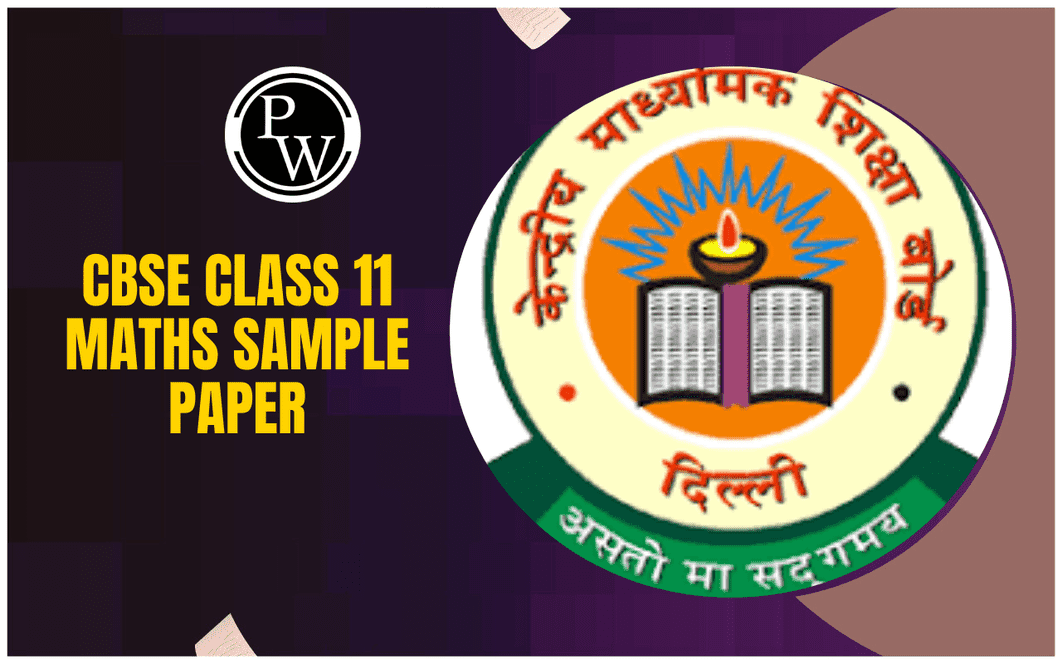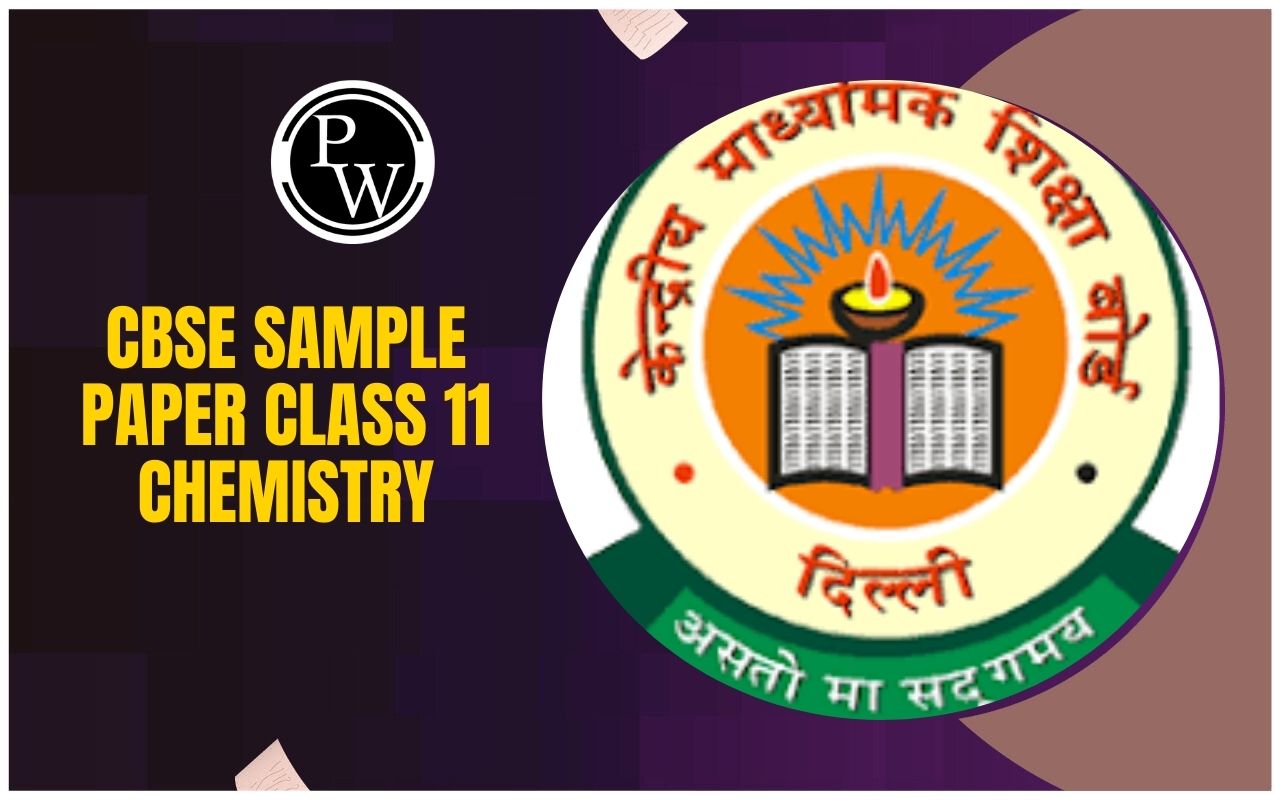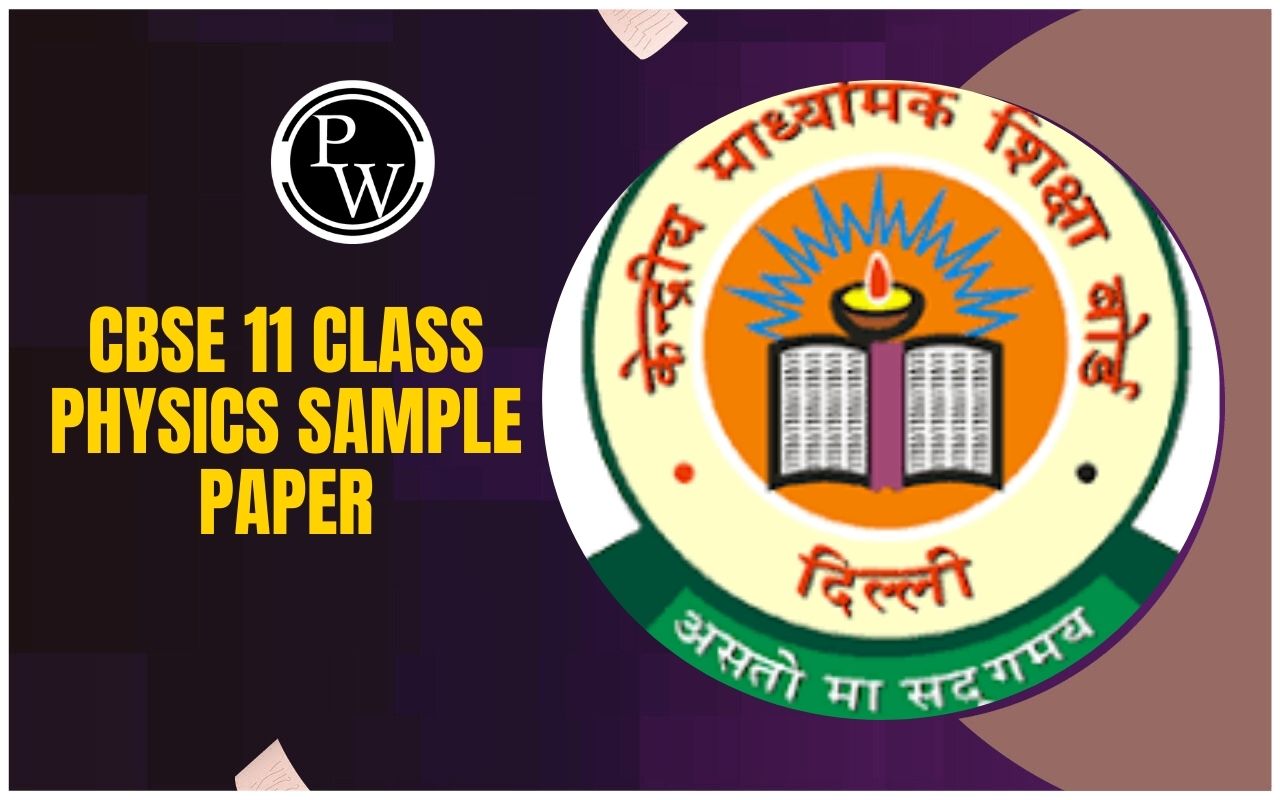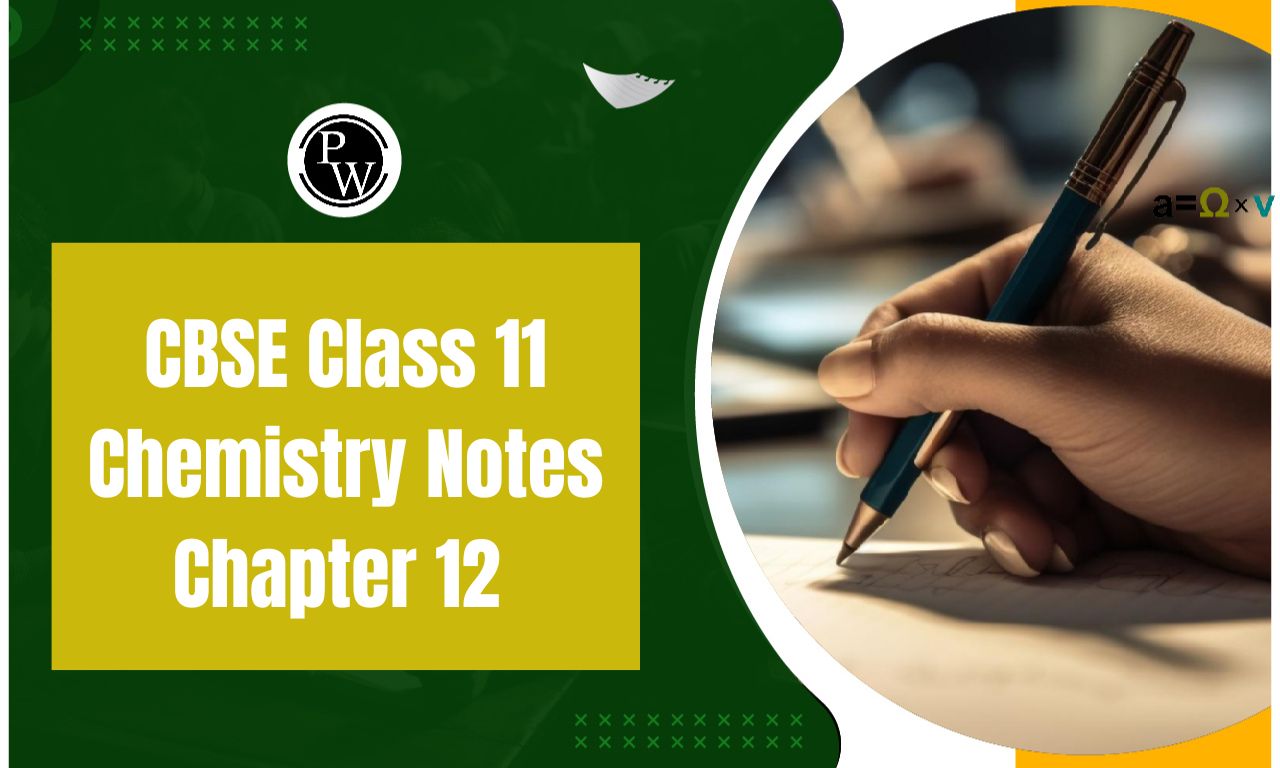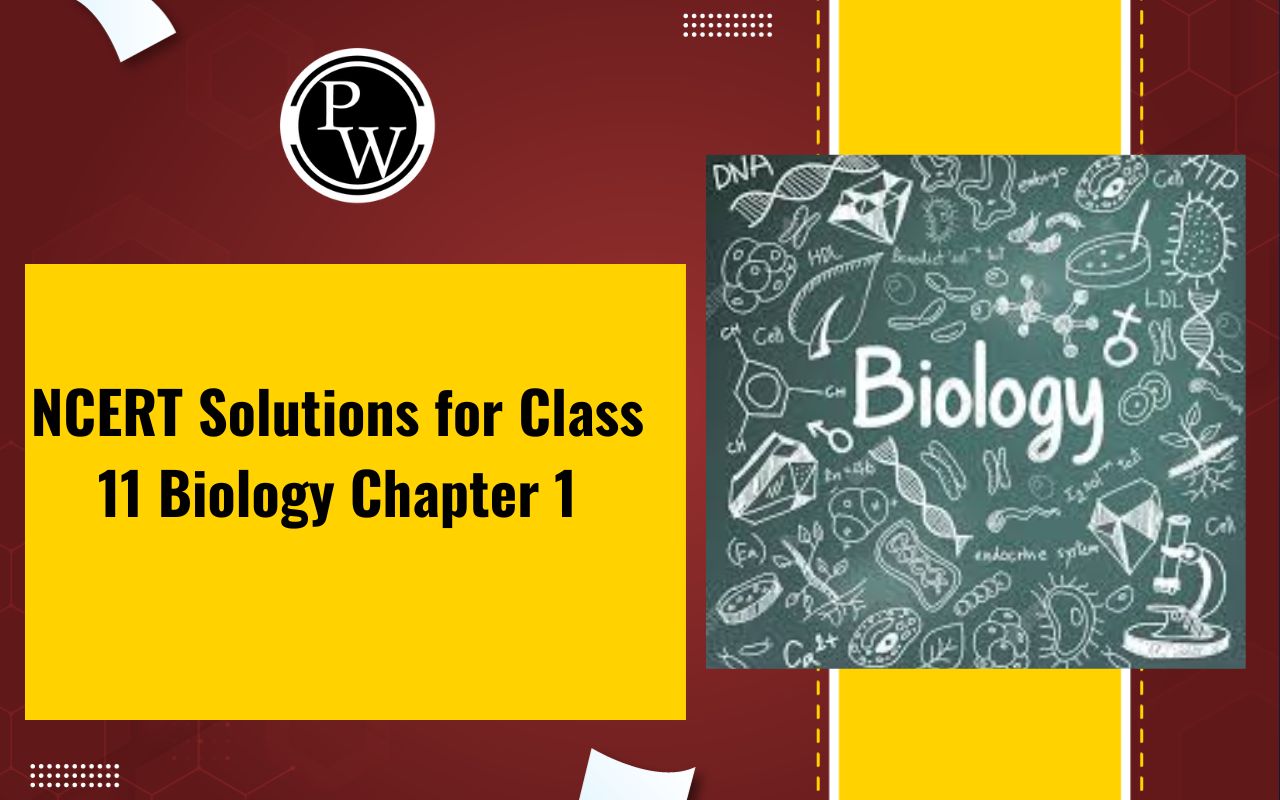
CBSE Class 11 Chemistry Syllabus 2024-25: The CBSE Class 11 Chemistry Syllabus 2024-25 has been updated in PDF format by the Central Board of Secondary Education. Class 11 students should review the complete CBSE Class 11 Chemistry Syllabus 2024-25 and prepare for the yearly examinations appropriately.
The CBSE Class 11 Chemistry Syllabus 2024-25 gives students a sense of the course structure, including all of the chapters and subjects that will be studied throughout the session. Referring to the syllabus before beginning your preparations will allow you to save time and allocate wisely to the chapters that carry the most weight. Scroll down to learn all there is to know about the CBSE Class 11 Chemistry Syllabus 2024-25 for the upcoming academic year.CBSE Class 11 Chemistry Syllabus 2024-25
The following subjects are included in the CBSE Class 11 Chemistry Syllabus 2024-25. Concepts of chemistry: This section explains the basic concepts of chemistry, such as matter, atoms, molecules, and chemical processes. Atom Structure: This section discusses the structure of atoms, including the electron, proton, and neutron. Chemical Bonding and Molecular Structure: This section addresses the many forms of chemical bonding and how they influence molecular structure. This section discusses the three states of matter: solids, liquids, and gases. This section examines the concepts of heat, work, and energy and how they relate to chemical processes. This section looks at the concept of equilibrium in chemical processes. This section discusses oxidation-reduction reactions, which are a kind of chemical reaction involving the transfer of electrons. The characteristics and reactions of hydrogen, the lightest element in the periodic table, are examined in this section. Some Fundamental Principles and Techniques in Organic Chemistry: This section discusses the basic concepts of organic chemistry, such as the structure and naming of organic chemicals.CBSE Class 12th Toppers List 2024
CBSE Class 11 Chemistry Syllabus 2024-25 Download PDF
The CBSE Class 11 Chemistry Syllabus for the academic year 2024-25 is a key resource for students studying Chemistry. This syllabus outlines the topics and concepts that students will cover throughout the academic year. Understanding the syllabus helps students plan their study schedule effectively, allocate time for each topic, and ensure comprehensive learning. With the PDF link provided below, students can easily download and refer to the CBSE Class 11 Chemistry Syllabus whenever needed. This enables students to stay organized, track their progress and prepare thoroughly for their Chemistry classes and examinations.CBSE Class 11 Chemistry Syllabus 2024-25 PDF
Marks Distribution of CBSE Class 11 Chemistry Syllabus 2024-25
The CBSE Class 11 Chemistry Syllabus 2024-25 mark distribution for practical and theoretical examinations is given below. The CBSE Class 11 Chemistry Syllabus 2024-25 differs for theoretical and practical examinations, and students must be aware of the marks distribution.Marks Distribution of CBSE Class 11 Chemistry Syllabus 2024-25 for Theory
The marking method will assist students in comprehending the significance of each subject in the CBSE Class 11 Chemistry Syllabus 2024-25. This will assist students in preparing for and facing the examinations. The CBSE class 11 chemistry (theoretical) test will be worth 70 marks. Students may use the chapter-by-chapter marking system to prepare for the exam.| Marks Distribution of CBSE Class 11 Chemistry Syllabus 2024-25 for Theory | ||
| Unit | No. of Periods | Marks |
| Some Basic Concepts of Chemistry | 18 | 7 |
| Structure of Atom | 20 | 9 |
| Classification of Elements and Periodicity in Properties | 12 | 6 |
| Chemical Bonding and Molecular Structure | 20 | 7 |
| Chemical Thermodynamics | 23 | 9 |
| Equilibrium | 20 | 7 |
| Redox Reactions | 9 | 4 |
| Organic Chemistry: Some Basic Principles and Techniques | 20 | 11 |
| Hydrocarbons | 18 | 10 |
| Total | 160 | 70 |
Marks Distribution of CBSE Class 11 Chemistry Syllabus 2024-25 for Practical
The practical examination will be worth thirty marks. To pass this test, students must do practical experiments. The following is the examination assessment scheme:| Marks Distribution of CBSE Class 11 Chemistry Syllabus 2024-25 for Practical | |
| Evaluation Scheme for Examination | Marks |
| Volumetric Analysis | 08 |
| Salt Analysis | 08 |
| Content-Based Experiment | 06 |
| Project work | 04 |
| Class record and viva | 05 |
| Total | 30 |
Unit-wise CBSE Class 11 Chemistry Syllabus 2024-25
The CBSE Class 11 Chemistry Syllabus 2024-25 has been created in such a manner that students will understand the fundamentals and will not have any difficulties in Class 12th. The CBSE 11th Chemistry Syllabus 2024-25 is available here, along with the official PDF. Students should go over all of the chapters in the CBSE Class 11 Chemistry Syllabus 2024-25 and work to cover them all before the tests.| Unit-wise CBSE Class 11 Chemistry Syllabus 2024-25 | ||
| Unit | Chapter | Topics |
| I. | Some Basic Concepts of Chemistry | General Introduction: Importance and scope of Chemistry. Nature of matter, laws of chemical combination, Dalton’s atomic theory: the concept of elements, atoms, and molecules. Atomic and molecular masses, mole concept and molar mass, percentage composition, empirical and molecular formula, chemical reactions, stoichiometry, and calculations based on stoichiometry. |
| II. | Structure of Atom | Discovery of Electron, Proton and Neutron, atomic number, isotopes and isobars. Thomson’s model and its limitations. Rutherford’s model and its limitations, Bohr’s model and its limitations, concept of shells and subshells, dual nature of matter and light, de Broglie’s relationship, Heisenberg uncertainty principle, concept of orbitals, quantum numbers, shapes of s, p and d orbitals, rules for filling electrons in orbitals – Aufbau principle, Pauli’s exclusion principle and Hund’s rule, electronic configuration of atoms, stability of half-filled and filled orbitals. |
| III. | Classification of Elements and Periodicity in Properties | Significance of classification, a brief history of the development of the periodic table, modern periodic law and the present form of the periodic table, periodic trends in properties of elements -atomic radii, ionic radii, inert gas radii, Ionization enthalpy, electron gain enthalpy, electronegativity, valency. Nomenclature of elements with atomic number greater than 100. |
| IV. | Chemical Bonding and Molecular Structure | Valence electrons, ionic bond, covalent bond, bond parameters, Lewis’s structure, polar character of covalent bond, covalent character of ionic bond, valence bond theory, resonance, geometry of covalent molecules, VSEPR theory, concept of hybridization, involving s, p and d orbitals and shapes of some simple molecules, molecular orbital theory of homonuclear diatomic molecules (qualitative idea only), Hydrogen bond. |
| V. | Chemical Thermodynamics | Concepts of Systems and types of systems, surroundings, work, heat, energy, extensive and intensive properties, and state functions. The first law of thermodynamics -internal energy and enthalpy, heat capacity and specific heat, measurement of ΔU and ΔH, Hess’s law of constant heat summation, enthalpy of bond dissociation, combustion, formation, atomization, sublimation, phase transition, ionization, solution and dilution. The second law of Thermodynamics (brief introduction) Introduction of entropy as a state function, Gibb’s energy change for spontaneous and non-spontaneous processes, and criteria for equilibrium. Third law of thermodynamics (brief introduction). |
| VI. | Equilibrium | Equilibrium in physical and chemical processes, dynamic nature of equilibrium, the law of mass action, equilibrium constant, factors affecting equilibrium – Le Chatelier’s principle, ionic equilibrium- ionization of acids and bases, strong and weak electrolytes, degree of ionization, ionization of polybasic acids, acid strength, the concept of pH, hydrolysis of salts (elementary idea), buffer solution, Henderson Equation, solubility product, common ion effect (with illustrative examples). |
| VII. | Redox Reactions | Concept of oxidation and reduction, redox reactions, oxidation number, balancing redox reactions, in terms of loss and gain of electrons and change in oxidation number, applications of redox reactions. |
| VIII. | Organic Chemistry -Some Basic Principles and Techniques | General introduction, methods of purification, qualitative and quantitative analysis, classification and IUPAC nomenclature of organic compounds. Electronic displacements in a covalent bond: inductive effect, electromeric effect, resonance and hyperconjugation. Homolytic and heterolytic fission of a covalent bond: free radicals, carbocations, carbanions, electrophiles and nucleophiles, types of organic reactions. |
| IX. | Hydrocarbons: Classification of Hydrocarbons Aliphatic Hydrocarbons: | Alkanes – Nomenclature, isomerism, conformation (ethane only), physical properties, chemical reactions including free radical mechanism of halogenation, combustion and pyrolysis. Alkenes – Nomenclature, the structure of double bond (ethene), geometrical isomerism, physical properties, methods of preparation, chemical reactions: addition of hydrogen, halogen, water, hydrogen halides (Markovnikov’s addition and peroxide effect), ozonolysis, oxidation, mechanism of electrophilic addition. Alkynes – Nomenclature, the structure of triple bond (ethyne), physical properties, methods of preparation, chemical reactions: acidic character of alkynes, addition reaction of – hydrogen, halogens, hydrogen halides, and water. Aromatic Hydrocarbons: Introduction, IUPAC nomenclature, benzene: resonance, aromaticity, chemical properties: mechanism of electrophilic substitution. Nitration, sulphonation, halogenation, Friedel Craft’s alkylation and acylation, directive influence of the functional group in monosubstituted benzene. Carcinogenicity and toxicity. |
CBSE Class 11 Chemistry Syllabus 2024-25 Question paper design
The table below consists of the CBSE Class 11 chemistry question paper design.| CBSE Class 11 Chemistry Syllabus 2024-25 Question paper design | ||
| Domain | Marks | Percentage |
| Remembering and Understanding: Exhibit memory of previously learned material by recalling facts, terms, basic concepts, and answers. Demonstrate understanding of facts and ideas by organizing, comparing, translating, interpreting, giving descriptions, and stating main ideas | 28 | 40 |
| Applying: Solve problems to new situations by applying acquired knowledge, facts, techniques, and rules in a different way. | 21 | 30 |
| Analysing, Evaluating and Creating: Examine and break information into parts by identifying motives or causes. Make inferences and find evidence to support generalisations. Present and defend opinions by making judgments about information, validity of ideas, or quality of work based on a set of criteria. Compile information together in a different way by combining elements in a new pattern or proposing alternative solutions. | 21 | 3 |
CBSE Class 11 Chemistry Syllabus 2024-25 for Practical
For some of the practical experiments, micro-chemical approaches are available. Such strategies should be employed whenever feasible.A. Basic Laboratory Techniques
- Cutting glass tube and glass rod
- Bending a glass tube
- Drawing out a glass jet
- Boring a cork
B. Characterization and Purification of Chemical Substances
- Determination of the melting point of an organic compound.
- Determination of the boiling point of an organic compound.
- Crystallization of impure sample of any one of the following: Alum, Copper Sulphate, Benzoic Acid.
C. Experiments based on pH
- Any one of the following experiments:
- Determination of pH of some solutions obtained from fruit juices, solutions of known and varied concentrations of acids, bases, and salts using pH paper or universal indicator.
- Comparing the pH of solutions of strong and weak acids of the same concentration. Study the pH change in the titration of a strong base using a universal indicator.
- Study the pH change by common ion in the case of weak acids and weak bases.
D. Chemical Equilibrium One of the following experiments:
- Study the shift in equilibrium between ferric ions and thiocyanate ions by increasing/decreasing the concentration of either of the ions.
- Study the shift in equilibrium between [Co(H2O)6] 2+ and chloride ions by changing the concentration of either of the ions.
E. Quantitative Estimation
- Using a mechanical balance/electronic balance.
- Preparation of standard solution of Oxalic acid.
- Determination of strength of a given solution of Sodium hydroxide by titrating it against a standard solution of Oxalic acid. Preparation of standard solution of Sodium carbonate.
- Determination of strength of a given solution of hydrochloric acid by titrating it against standard Sodium Carbonate solution.
F. Qualitative Analysis
- Determination of one anion and one cation in a given salt Cation: Pb2+, Cu2+ As3+, Aℓ3+, Fe3+, Mn2+, Zn2+, Ni2+, Ca2+, Sr2+, Ba2+, Mg2+, NH4 + Anions: (CO3) 2-, S2-, (SO3) 2-, (NO2) -, (SO4) 2-, Cℓ-, Br-, I-, (PO4) 3-, (C2O4) 2-, CH3COO-, NO3 - (Note: Insoluble salts excluded)
- Detection of -Nitrogen, Sulphur, and Chlorine in organic compounds.
CBSE Class 11 Chemistry Syllabus 2024-25 for Projects
Scientific investigations involve laboratory testing and collecting information from other sources. A few suggested Projects:- Checking the bacterial contamination in drinking water by testing sulfide ion
- Study of the methods of purification of water
- Testing the hardness, presence of Iron, Fluoride, Chloride, etc., depending upon the regional variation in drinking water, and study of causes of the presence of these ions above the permissible limit (if any).
- Investigation of the foaming capacity of different washing soaps and the effect of the addition of Sodium carbonate on it
- Study the acidity of different samples of tea leaves.
- Determination of the rate of evaporation of different liquids.
- Study the effect of acids and bases on the tensile strength of fibres.
- Study of acidity of fruit and vegetable juices.
Deleted chapters in CBSE Class 11 Chemistry Syllabus 2024-25
The units listed below are the final Chemistry units for the 2024-25 Class 11 Science batch. Except for two, the majority of the units contain the same content. The subjects introduced to the CBSE Class 11 Chemistry Syllabus 2024-25 are listed below.| Deleted chapters in CBSE Class 11 Chemistry Syllabus 2024-25 | |||
| Unit Number | Chapter Name | Deleted Topics | Added Topics |
| I | Some Basic Concepts of Chemistry | - | - |
| II | Structure of Atom | - | Discovery of Electron, Proton, and Neutron, atomic number, isotopes, and isobars. Thomson's model and its limitations. Rutherford's model and its limitations. |
| III | Classification of Elements and Periodicity in Properties | - | Significance of classification, a brief history of the development of the periodic table |
| IV | Chemical Bonding and Molecular Structure | - | - |
| V | Chemical Thermodynamics | - | - |
| VI | Equilibrium | - | - |
| VII | Redox Reactions | - | - |
| VIII | Organic Chemistry: Some Basic Principles and Techniques | - | - |
| IX | Hydrocarbons | - | - |
| Units/Chapters | Deleted Topics | Topics covered in Deleted Units |
| Chemistry - Part I | ||
| Unit V: States of Matter: Gases and Liquids | Complete Chapter | Three states of matter, intermolecular interactions, types of bonding, melting and boiling points, role of gas laws in elucidating the concept of the molecule, Boyle's law, Charles law, Gay Lussac's law, Avogadro's law, ideal behaviour, empirical derivation of gas equation, Avogadro's number, ideal gas equation. Deviation from ideal behaviour, liquefaction of gases, critical temperature, kinetic energy and molecular speeds (elementary idea) Liquid State: vapour pressure, viscosity and surface tension (qualitative idea only, no mathematical derivations) |
| Chemistry—Part II | ||
| Unit IX: Hydrogen | Complete Chapter | Position of hydrogen in the periodic table, occurrence, isotopes, preparation, properties and uses of hydrogen, hydrides-ionic covalent and interstitial; physical and chemical properties of water, heavy water, hydrogen peroxide - preparation, reactions and structure and use; hydrogen as a fuel. |
| Unit X: s-Block Elements | Complete Chapter | Group 1 and Group 2 Elements General introduction, electronic configuration, occurrence, anomalous properties of the first element of each group, diagonal relationship, trends in the variation of properties (such as ionization enthalpy, atomic and ionic radii), trends in chemical reactivity with oxygen, water, hydrogen and halogens, uses. Preparation and Properties of Some Important Compounds: Sodium Carbonate, Sodium Chloride, Sodium Hydroxide and Sodium hydrogen carbonate, Biological importance of Sodium and Potassium. Calcium Oxide and Calcium Carbonate and their industrial uses, biological importance of Magnesium and Calcium. |
| Unit XI: Some p-Block Elements | Complete Chapter | General Introduction to p -Block Elements Group 13 Elements: General introduction, electronic configuration, occurrence, variation of properties, oxidation states, trends in chemical reactivity, anomalous properties of the first element of the group, Boron - physical and chemical properties, some important compounds, Borax, Boric acid, Boron Hydrides, Aluminium: Reactions with acids and alkalies, uses. Group 14 Elements: General introduction, electronic configuration, occurrence, variation of properties, oxidation states, trends in chemical reactivity, anomalous behaviour of first elements. Carbon-catenation, allotropic forms, physical and chemical properties; uses of some important compounds: oxides. Important compounds of Silicon and a few uses: Silicon Tetrachloride, Silicones, Silicates and Zeolites, their uses. |
| Unit XIV: Environmental Chemistry | Complete Chapter | Environmental pollution - air, water and soil pollution, chemical reactions in the atmosphere, smog, major atmospheric pollutants, acid rain, ozone and its reactions, effects of depletion of the ozone layer, greenhouse effect and global warming- pollution due to industrial wastes, green chemistry as an alternative tool for reducing pollution, strategies for control of environmental pollution. |
|
Links Related to Other Subjects |
|
| CBSE Class 11 Physics Syllabus | CBSE Class 11 English Syllabus |
| CBSE Class 11 Maths Syllabus | CBSE Class 11 Accountancy Syllabus |
| CBSE Class 11 Business Studies Syllabus | CBSE Class 11 Economics Syllabus |
CBSE Class 11 Chemistry Syllabus 2024-25 FAQs
Which chapters are removed from Chemistry Class 12?
Solid State, Surface Chemistry, Isolation of Elements, p-Block Elements, Polymers, and Chemistry in Everyday Life are the chapters that have been removed from the CBSE Chemistry Class 12 curriculum 2024-25
How many chapters are there in Chemistry 11 in 2024?
This NCERT chemistry curriculum for class 11 comprises 14 units and chapters that must be studied for annual and terminal examinations. It also gives an insight into the NCERT syllabus's chosen and key themes.
Is CBSE reduced syllabus 2024-25?
The CBSE (Central Board of Secondary Education) has just reduced the Class 10 Maths Syllabus by 30% for the 2024-25 academic session.
Is Class 11 chemistry difficult?
Aside from ionics, electrochemistry and thermodynamics are regarded as difficult. Organic Chemistry, on the other hand, is one of the most difficult courses in Class 12 and deals with fundamental concepts such as IUPAC, Hydrocarbons, and Reaction Mechanism.
Can CBSE fail a student in 11th 2024?
If a student fails to get 33% in more than one subject, he or she will be forced to retake class XI. The test will take place either before or after the planned day and time. A student who is missing from an examination without a valid excuse will be marked absent.
🔥 Trending Blogs
Talk to a counsellorHave doubts? Our support team will be happy to assist you!

Free Learning Resources
PW Books
Notes (Class 10-12)
PW Study Materials
Notes (Class 6-9)
Ncert Solutions
Govt Exams
Class 6th to 12th Online Courses
Govt Job Exams Courses
UPSC Coaching
Defence Exam Coaching
Gate Exam Coaching
Other Exams
Know about Physics Wallah
Physics Wallah is an Indian edtech platform that provides accessible & comprehensive learning experiences to students from Class 6th to postgraduate level. We also provide extensive NCERT solutions, sample paper, NEET, JEE Mains, BITSAT previous year papers & more such resources to students. Physics Wallah also caters to over 3.5 million registered students and over 78 lakh+ Youtube subscribers with 4.8 rating on its app.
We Stand Out because
We provide students with intensive courses with India’s qualified & experienced faculties & mentors. PW strives to make the learning experience comprehensive and accessible for students of all sections of society. We believe in empowering every single student who couldn't dream of a good career in engineering and medical field earlier.
Our Key Focus Areas
Physics Wallah's main focus is to make the learning experience as economical as possible for all students. With our affordable courses like Lakshya, Udaan and Arjuna and many others, we have been able to provide a platform for lakhs of aspirants. From providing Chemistry, Maths, Physics formula to giving e-books of eminent authors like RD Sharma, RS Aggarwal and Lakhmir Singh, PW focuses on every single student's need for preparation.
What Makes Us Different
Physics Wallah strives to develop a comprehensive pedagogical structure for students, where they get a state-of-the-art learning experience with study material and resources. Apart from catering students preparing for JEE Mains and NEET, PW also provides study material for each state board like Uttar Pradesh, Bihar, and others
Copyright © 2025 Physicswallah Limited All rights reserved.
Get App

